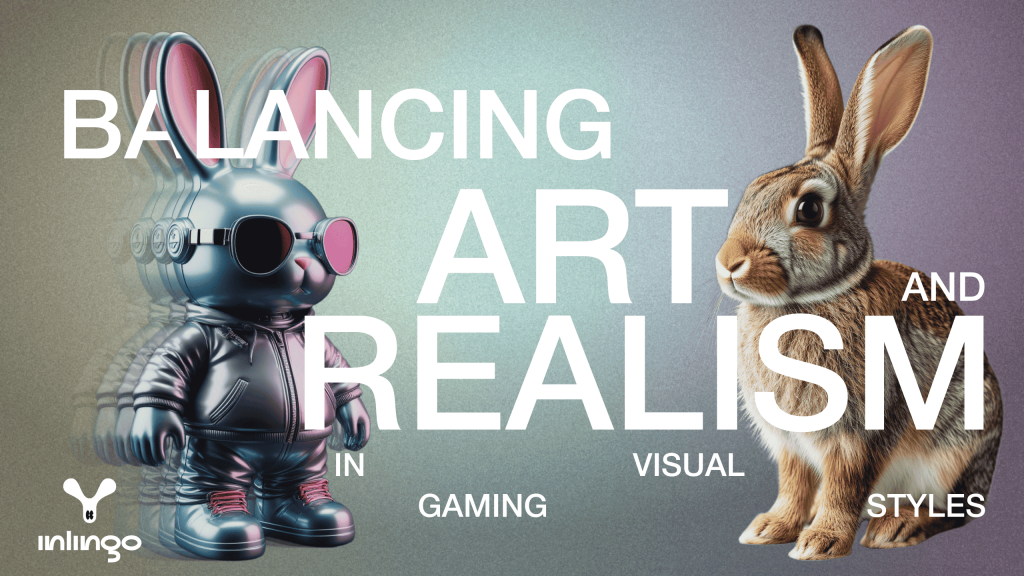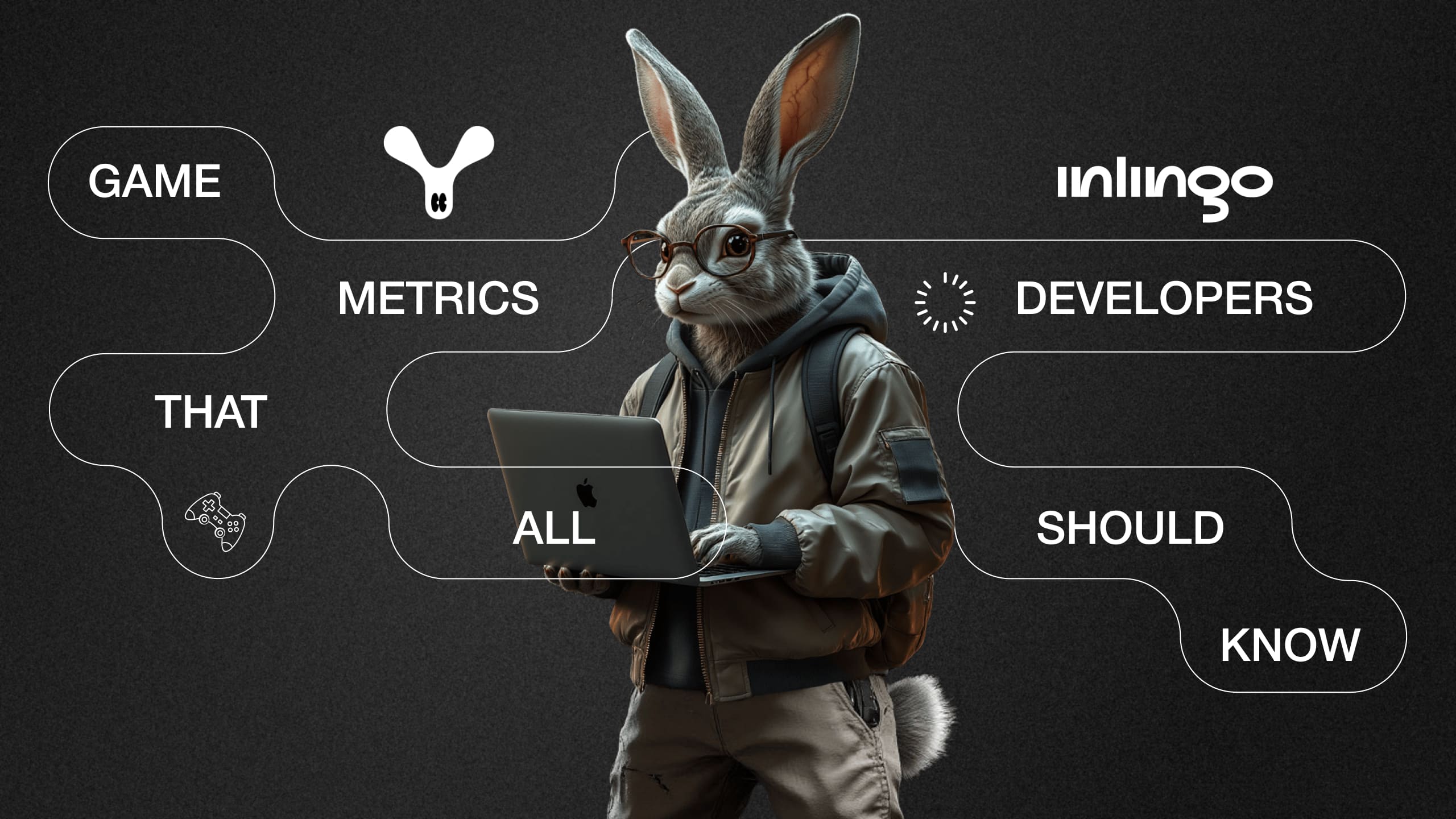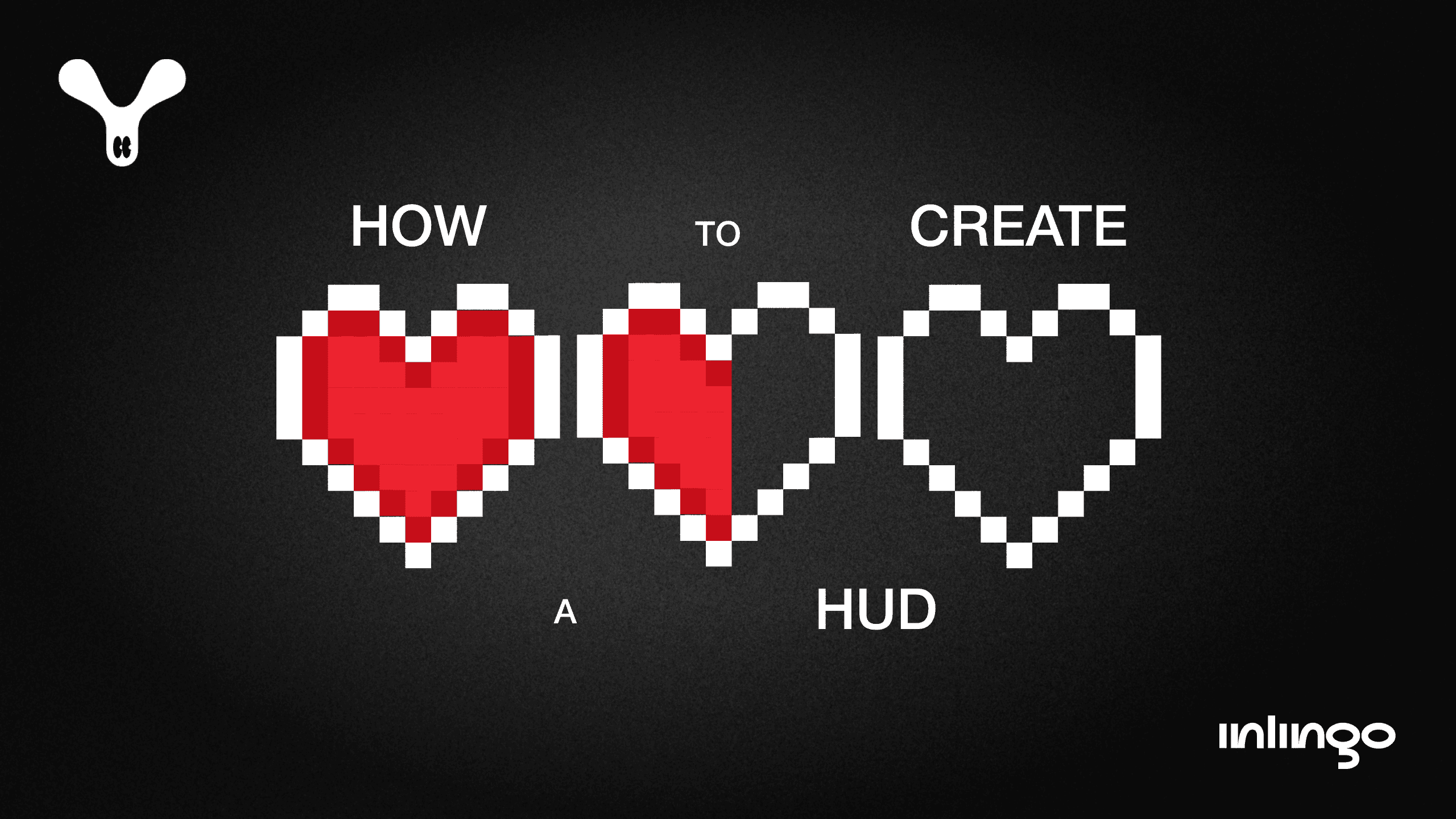Visual design styles play a key role in perception and atmosphere. One of the most interesting and popular approaches today is stylized realism. It combines expressive artistic design with realistic elements, creating worlds that feel alive but remain visually unique.
What is Realism and Stylized Realism in Gaming
In games, a realistic style seeks to recreate the surrounding world as we see it: accurate rendering of light, materials, textures, and proportions is key. An example is The Last of Us Part II, where attention to detail brings the action closer to cinema.
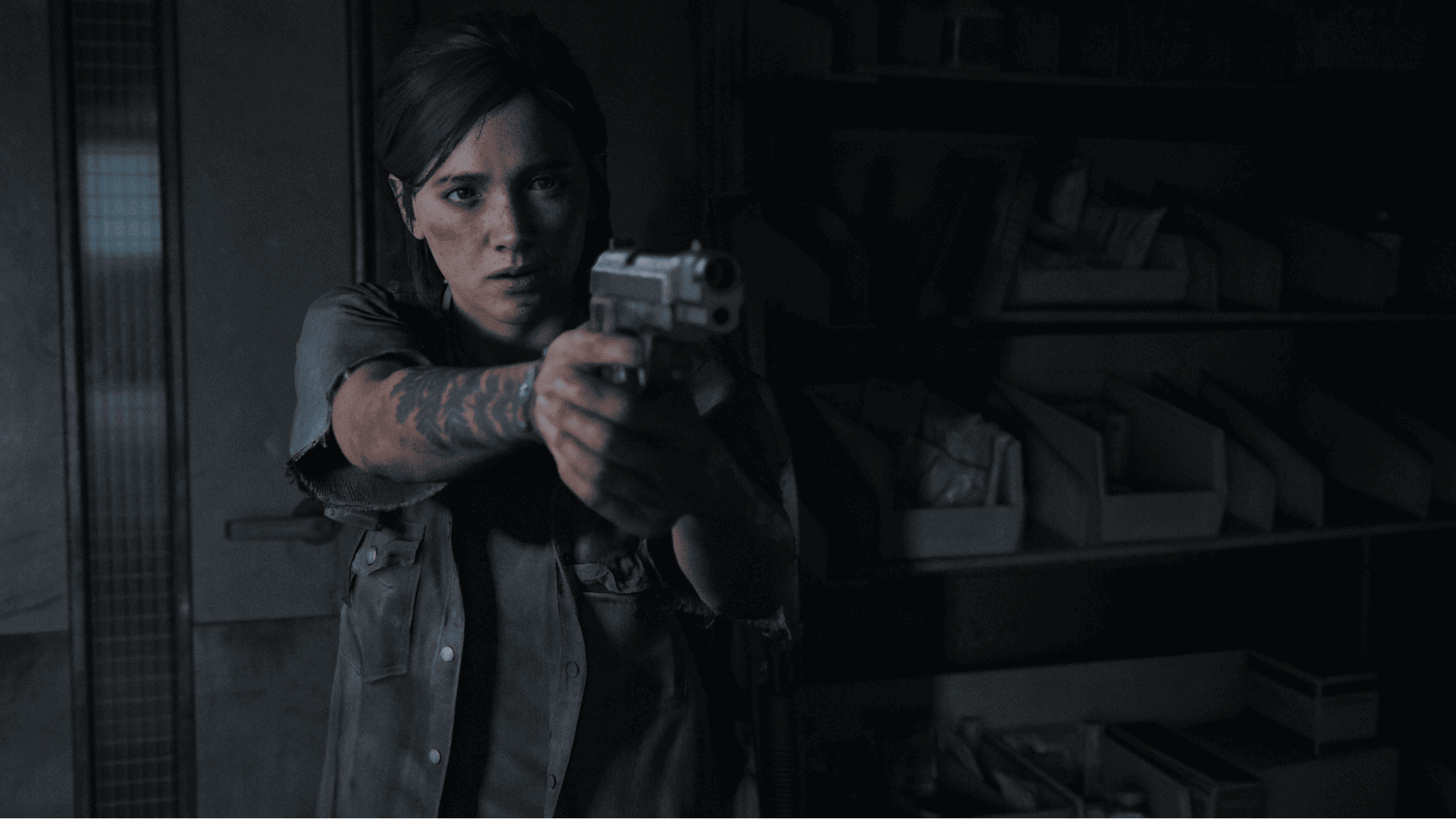
The Last of Us Part II. Source
A stylized artistic style requires a conscious departure from photorealism. The visual language here may be inspired by cartoons, graphic design, and painting. An example of this is Overwatch, where the characters and environment are bright, high-contrast, and have exaggerated shapes.
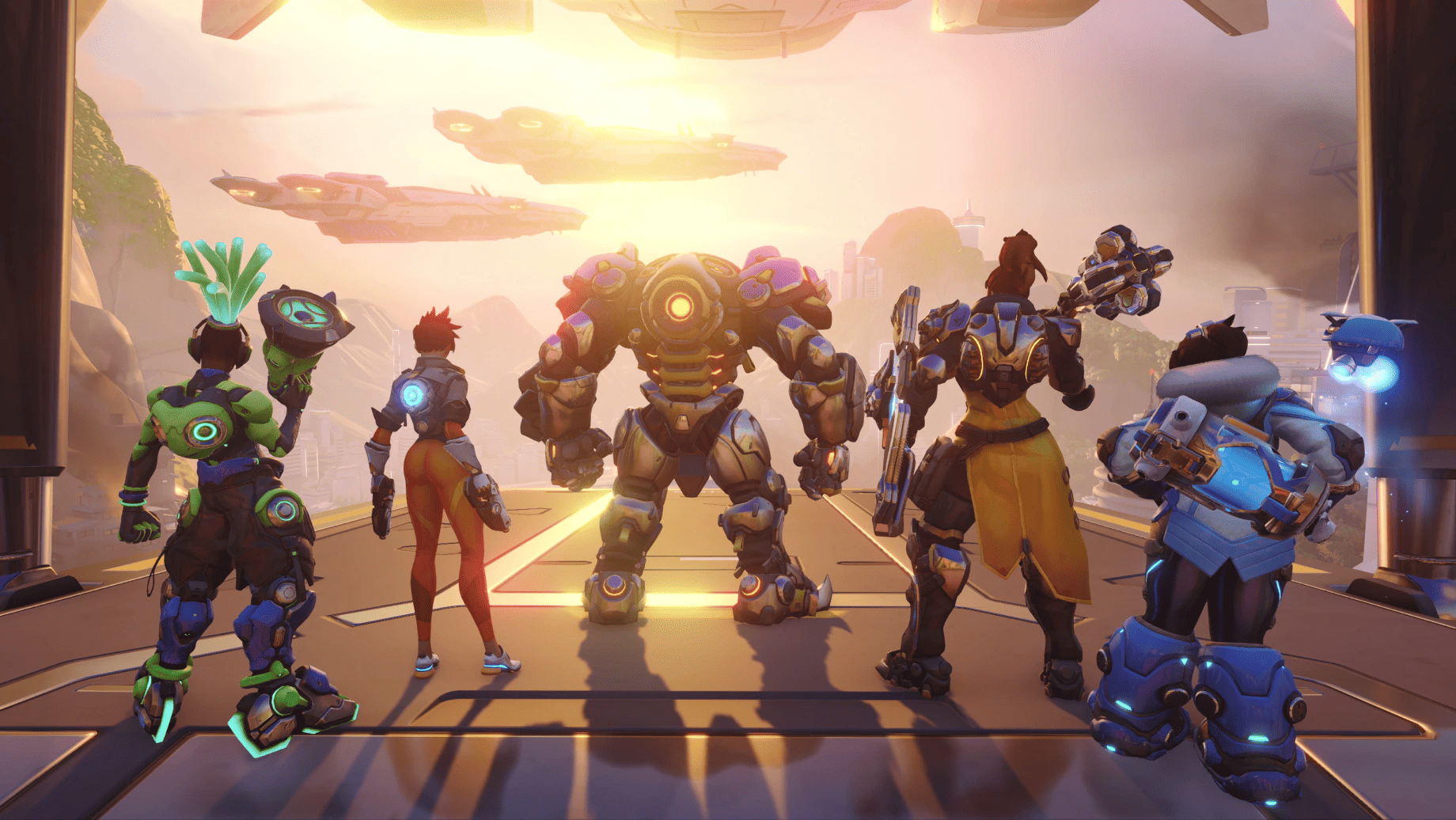
Overwatch. Source
Stylized realism falls between these two approaches, as it retains recognizable and realistic features (such as materials, lighting, and the physics of movement) but frames them in an artistic style. Examples include Kena: Bridge of Spirits and Ghost of Tsushima, which both have cinematic but not photorealistic visuals.
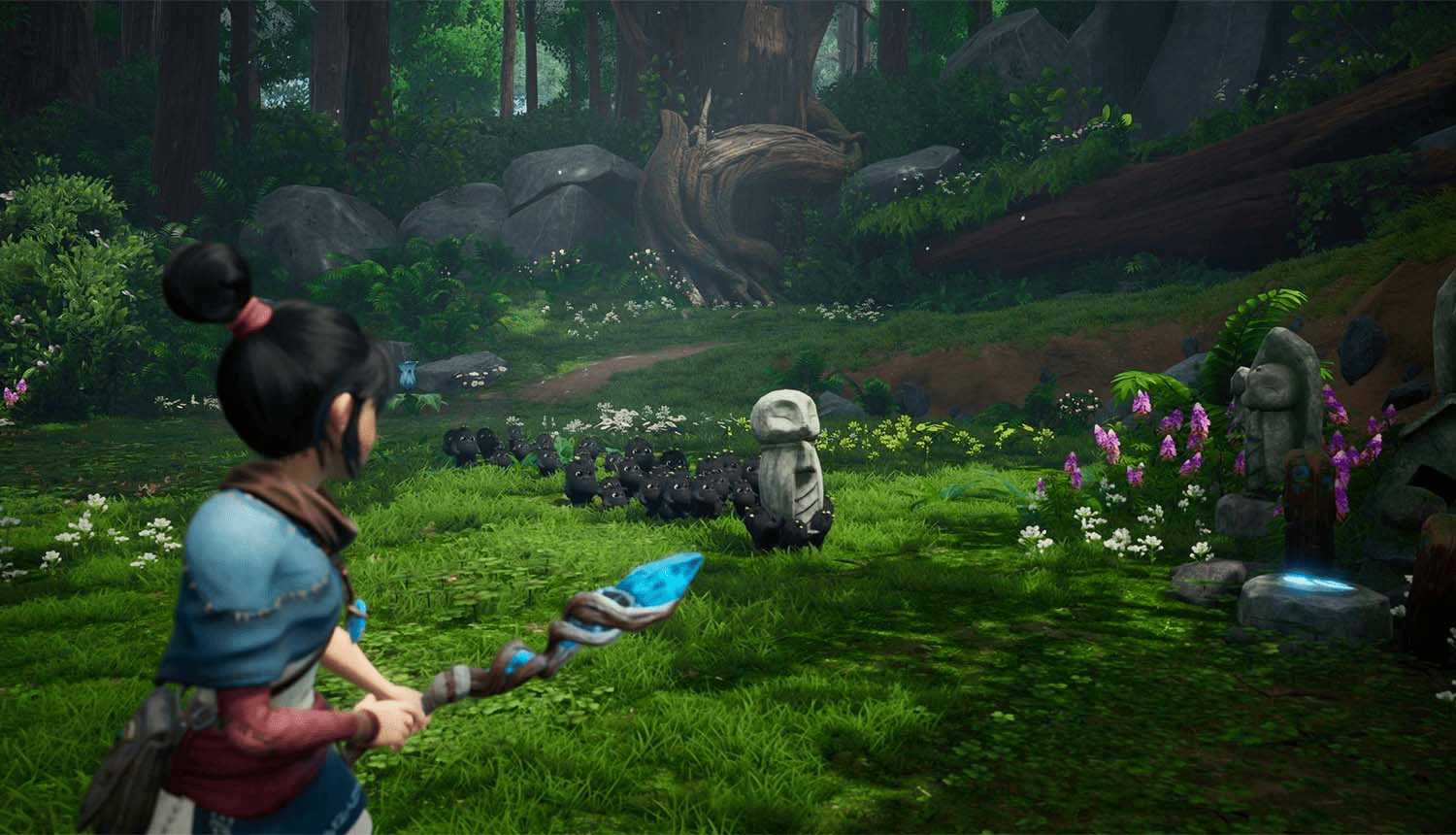
Kena: Bridge of Spirits. Source
Why Stylized Realism is Appealing
Advantages:
- It’s a unique visual style that stands out from the competition
It evokes more emotion and associations, essentially functioning as visual art, which makes these games memorable in part due to their style.
- It works better on weak devices
Stylized realism often uses simplified shapes, textures, and materials that are visually striking, but don’t require high computing power.
While photorealistic styles require every reflection, shadow, and physical effect to be calculated in real time, stylized artistic designs are optimized for artistic purposes, rather than for the technical reproduction of reality. That’s why these games are easier to adapt for weak hardware, without needing to worry about losing the visual quality.
- Obsolescence is slow
Genshin Impact’s style is still current today. Games that are based on this style often use bright, anime-inspired stylization that emphasizes colorful palettes, expressive characters, and detailed yet simplified worlds.
Examples include Honkai Impact 3rd, Tower of Fantasy, and any number of indie RPGs and other adventure projects that seek to combine artistic style and optimization across different platforms.
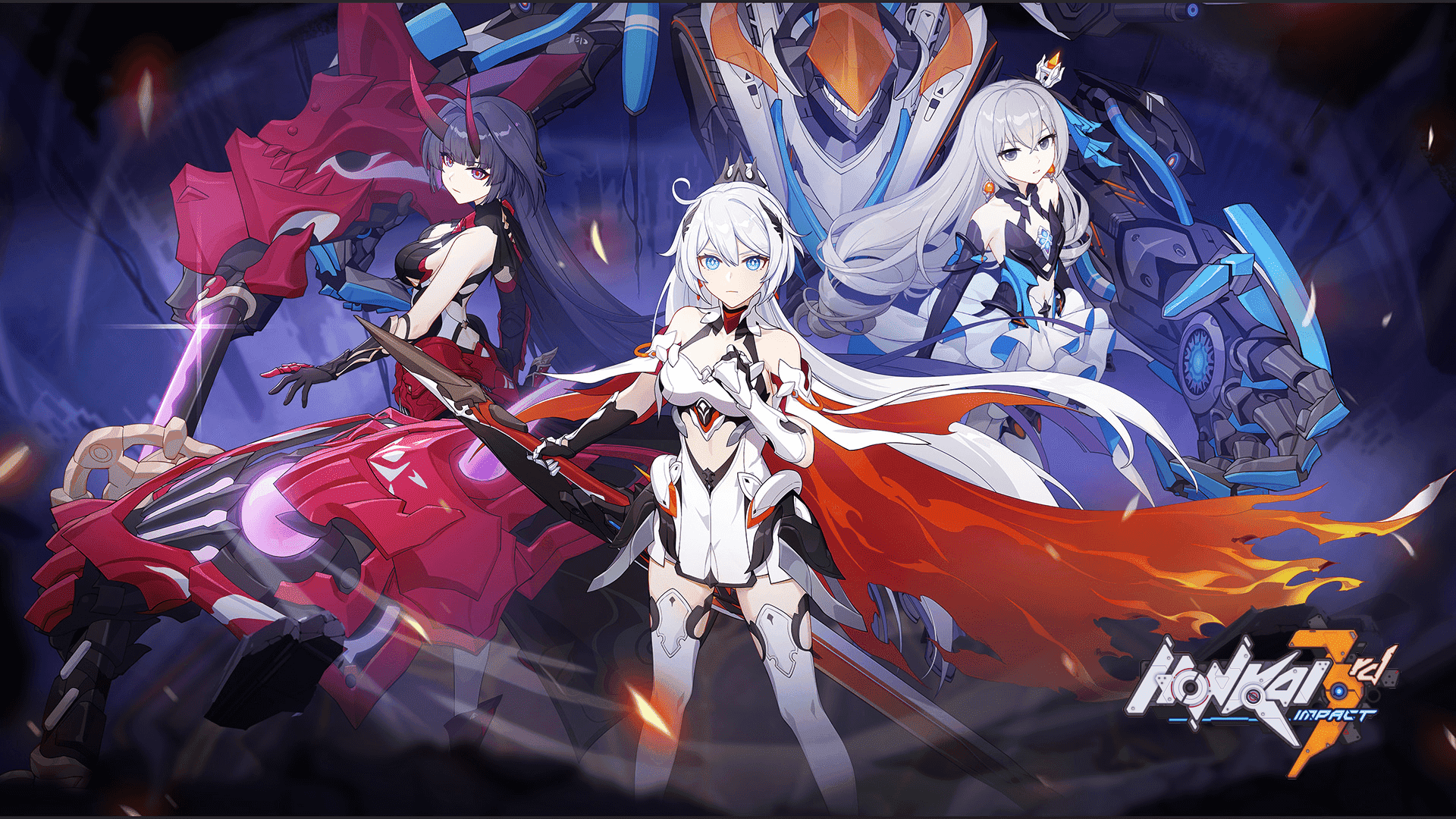
Honkai Impact 3rd. Source
This style does have drawbacks, of course. For some projects, they’re too serious—in this case developers prefer a different style.
- It requires a strong team of artists and an art director
Photorealism essentially replicates reality. Meanwhile, stylized realism requires you to think the whole thing through so your game stands out from others, thus requiring a large team.
- It’s not always suitable for dark or realistic genres (like horror)
Stylized realism visually distances the player from reality: it softens details, distorts proportions, and places artistic emphasis on style as opposed to realism. For genres like horror, where it’s important to create a sense of threat, anxiety, and physical discomfort, the player needs to feel like they’re in a real, dangerous world.
- It may be perceived as “less serious”
Realistic artistic style heightens the tension through its authenticity—lighting, skin textures, blood, sounds, and animation. Meanwhile, stylized visuals can subconsciously be perceived as safe and cartoonish, and therefore less serious and frightening.
- It risks falling into the uncanny valley
The uncanny valley effect occurs when a character’s style or animation is almost realistic, but falls short of complete believability. As a result, the character looks strange and unnatural, making the player uncomfortable—especially when it comes to the face, facial expressions, and movement.
Example—Mass Effect: Andromeda. The characters in the game look almost realistic, but their facial expressions often don’t match the tone of their speech, and the emotions on their faces seem “empty.” This ruins the immersion and makes it awkward.
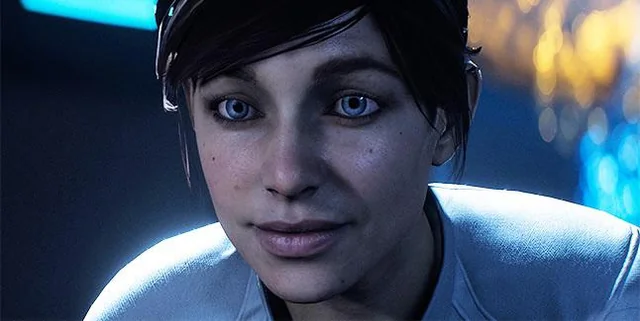
On Reddit, for instance, a user wrote: “I figured out why Andromeda characters strike me as weird looking. When moving, their eyes seem disconnected from their face, and their faces look like masks over a head that’s too small.” Source
What Is So Appealing About a More Realistic Style
Advantages of this art style:
- The realistic art style helps players believe what’s happening
If the world looks and behaves like the real thing, it inspires trust. This trust is especially important in games with strong storylines, high emotional stakes, or complex mechanics—for example, Red Dead Redemption 2 or The Last of Us Part II.

Red Dead Redemption 2. Source
- Players expect a realistic art style by default in some genres
Flight or car simulators, like Microsoft Flight Simulator or Gran Turismo, are expected to have a high level of detail in order to emphasize technical accuracy.

Microsoft Flight Simulator. Source
- It’s suitable for dramatic or serious genres
Realism sets the right tone in shooters, simulators, military strategy games, and thrillers. It creates a tense atmosphere, realistic threats, and helps players build empathy for the characters.
The style does have its drawbacks:
- Realism requires a significant investment
It requires high-quality textures, complex lighting, advanced materials, and animations. All of this puts a strain on both the team and equipment. Games like this take longer to produce and require the players to have powerful hardware.
- The style becomes outdated quickly
What counted as “realistic” 5–10 years ago probably looks clunky and archaic today. A game that uses photorealism risks becoming visually outdated just a couple of years after its release.
- Realism = less artistic flexibility
Experimenting is more difficult when going for a realistic art style: the design is limited by the laws of physics and perception. This can stifle the art team and hinder their ability to convey the atmosphere, especially if the game is built on symbolism or metaphors.
The Difference Between Realism and Stylization: Five Key Features
1. Lighting
- In realism, the focus is on it being physically accurate with global lighting, shading, and soft shadows.
- In stylized realism, lighting can be used to emphasize form and mood, and be more cinematic.
2. Materials
- Realism captures real properties, such as the roughness of skin or the shine of steel.
- Stylized realism allows for the materials to be obvious but simplified, like in Valorant.

Valorant. We understand that the wall is made of bricks, but they aren’t photorealistic. Source
3. Proportions
- Realism preserves anatomical accuracy. Characters move like people in real life.
- Exaggerated bodies, enlarged eyes, and expressive silhouettes are acceptable in stylized realism.
4. Animation
- Realism requires smoothness and physical authenticity of movement—just like in real life.
- In stylized games, movements can be exaggerated like in cartoons.
5. Camera Effects
- Blurring, chromatic aberration, and grain are standard for realism.
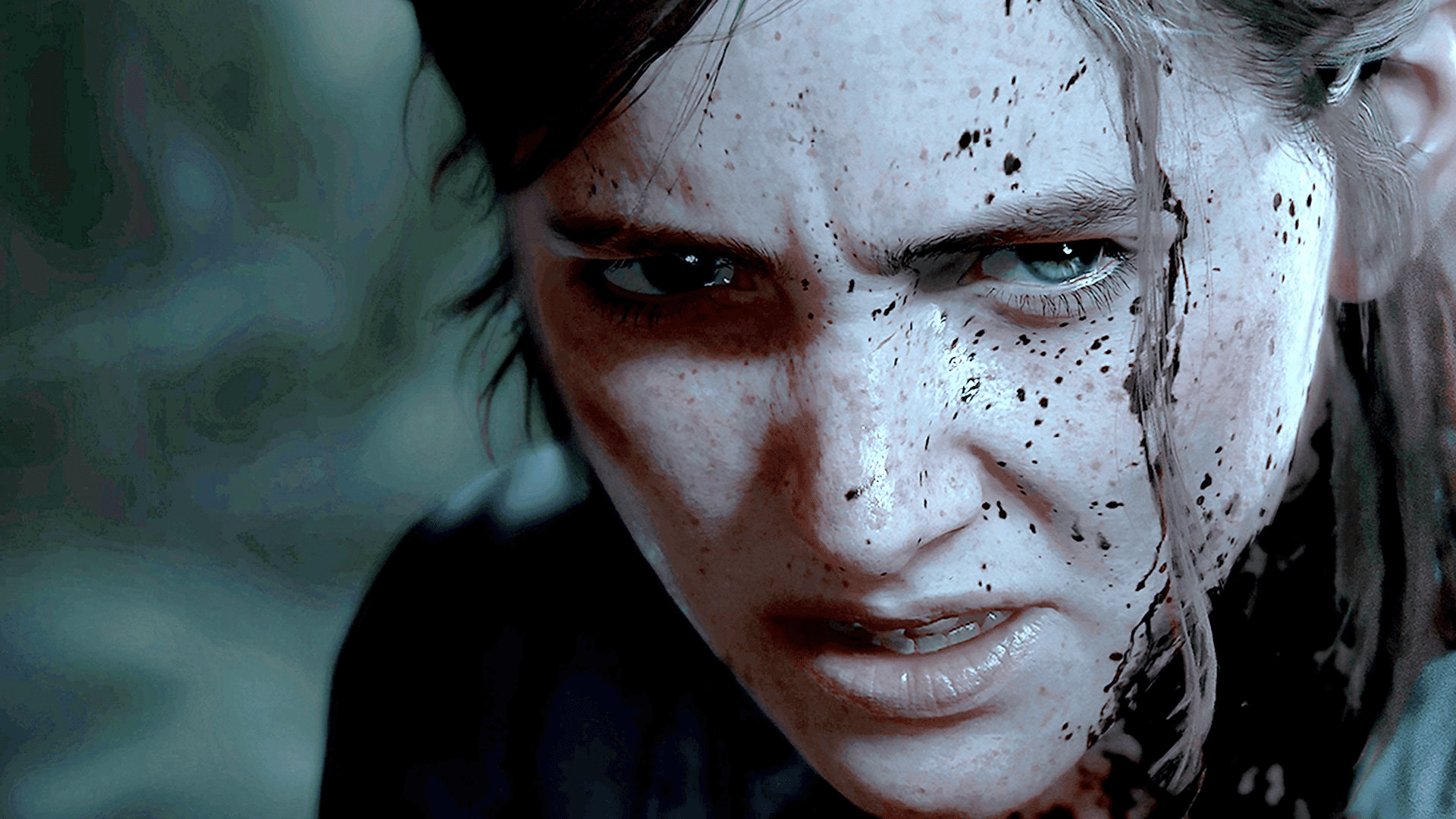
Realistic close-up in The Last of Us Part II. Source
- In stylized games, a clean image without “noise” is used more often, and effects are often applied specifically as a stylistic device.
How Do Players Perceive Visual Styles?
Realistic style visuals are traditionally associated with seriousness and adult themes. They give the sense that this is the real world—with its complexities, drama, and harshness. Players expect realistic games to be believable and have deep emotions and heavy storylines, which is especially important for action, drama, and historical games. This type of art style encourages trust and helps to immerse the viewer, because everything seems familiar and “real.”
On the other hand, a stylized artistic style is often perceived as lighter, more fairytale-like, and emotional. It gives artists space for creativity: simplified forms, bright colors, and unusual proportions help convey an idea or mood versus reality. This style works well for genres where the atmosphere, symbolism, and expression are important—like adventure, indie games, or platformers.
Stylized realism combines these two approaches. It creates an artistic world that is visually understandable and harmonious, yet also has its own internal logic and rules. It’s easy for players to believe in this world because it balances recognizability and artistic expression. This style is ideal for projects where both emotional depth and technical optimization are important—for example, in story-driven RPGs or quests.
How to Choose the Right Style for Your Project
The choice of artistic style in a game depends on several key factors that influence the project’s perception and technical implementation.
- The game genre
In strategy, RPG, and adventure games, a stylized style often works better because it allows you to create unique worlds with an expressive atmosphere and doesn’t tie developers to strict rules of physics and realism. An example is a game like Divinity: Original Sin or The Legend of Zelda: Breath of the Wild, both of which use stylization to emphasize the fantastical nature of the world and its characters, thereby heightening the emotional response.

Divinity: Original Sin. Source
Meanwhile, military shooters and simulators demand realism to create a sense of accuracy, seriousness, and authenticity; Call of Duty and Arma are examples of this.
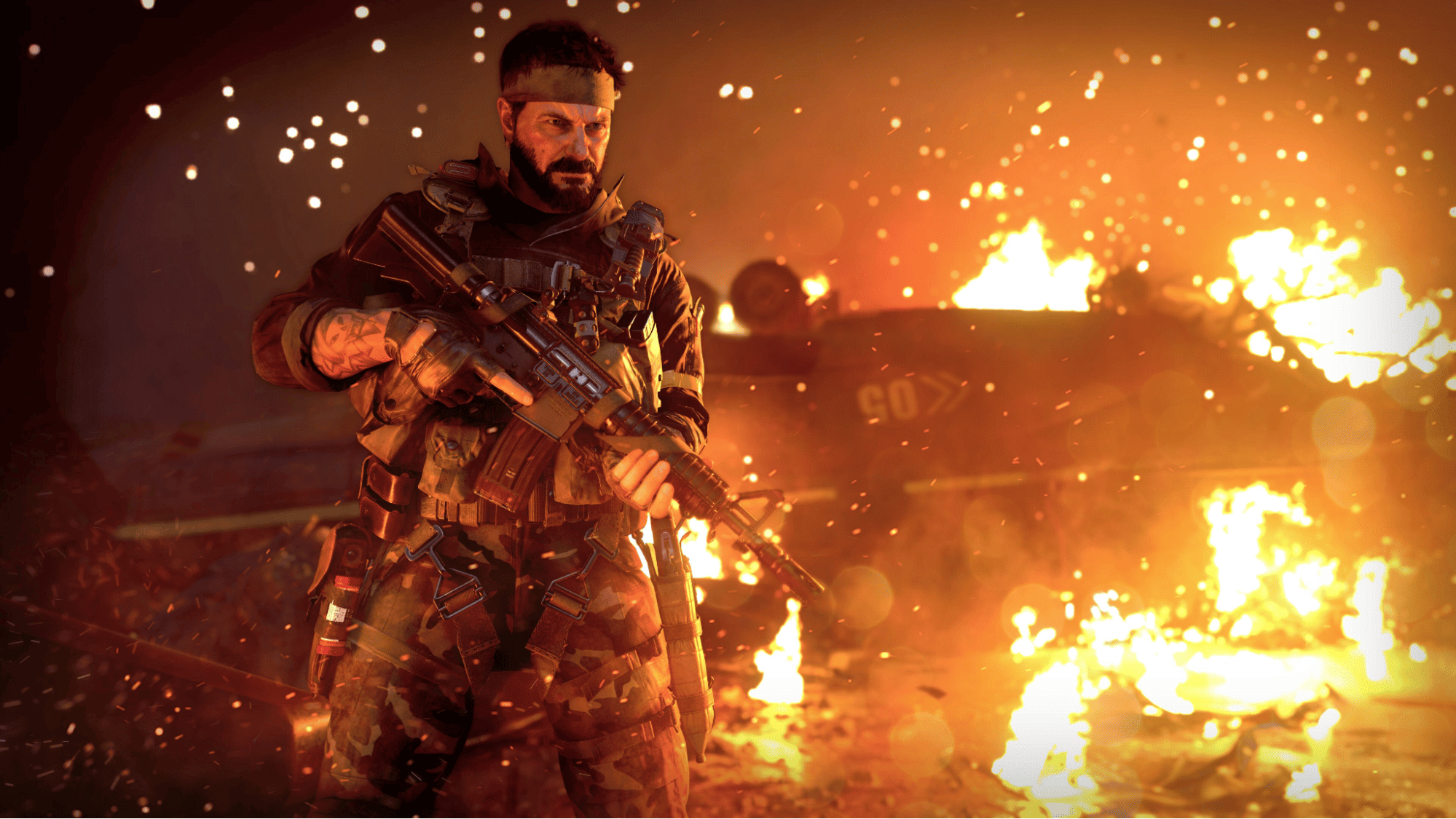
Call of Duty. Source
- The platform
A stylized visual style is easier to adapt to mobile devices and consoles with limited resources, like the Nintendo Switch. The simplified textures and materials mean the good game performance, without any sacrifice of artistic expression. Realistic projects, on the other hand, require more powerful hardware and may not perform well on weaker platforms.
- Your target audience
Younger audiences are often more open to visual experiments and unconventional artistic solutions. These players appreciate the originality and emotional component that stylization provides. More mature players may prefer classic realism and see it as a sign of seriousness and depth, especially when it comes to dramatic plots.
- Your budget and team
Realism requires quite a few technical resources, such as complex models, advanced materials, animations, and detailed work, all of which increase development time and cost. This means you’ll need a strong technical department and advanced tools.
Stylized games rely more on creativity and artistic control: ideas and stylistic choices are more important here than expensive textures and complex physics. This makes it possible to work with smaller budgets and teams while maintaining a high level of expressiveness.
The Bottom Line
Stylization and realism aren’t opposites, they’re tools. Stylized realism combines the best of both worlds: it creates a believable yet expressive and vibrant game world. The important thing is to understand what atmosphere you’re trying to convey, and choose the art style that is best suited for it.
If you’re aiming for an expressive visual style for your game, we can help you find the right balance between realism and a more artistic approach. Contact INLINGO to create memorable art that will enhance your game and make it stand out from the rest.

